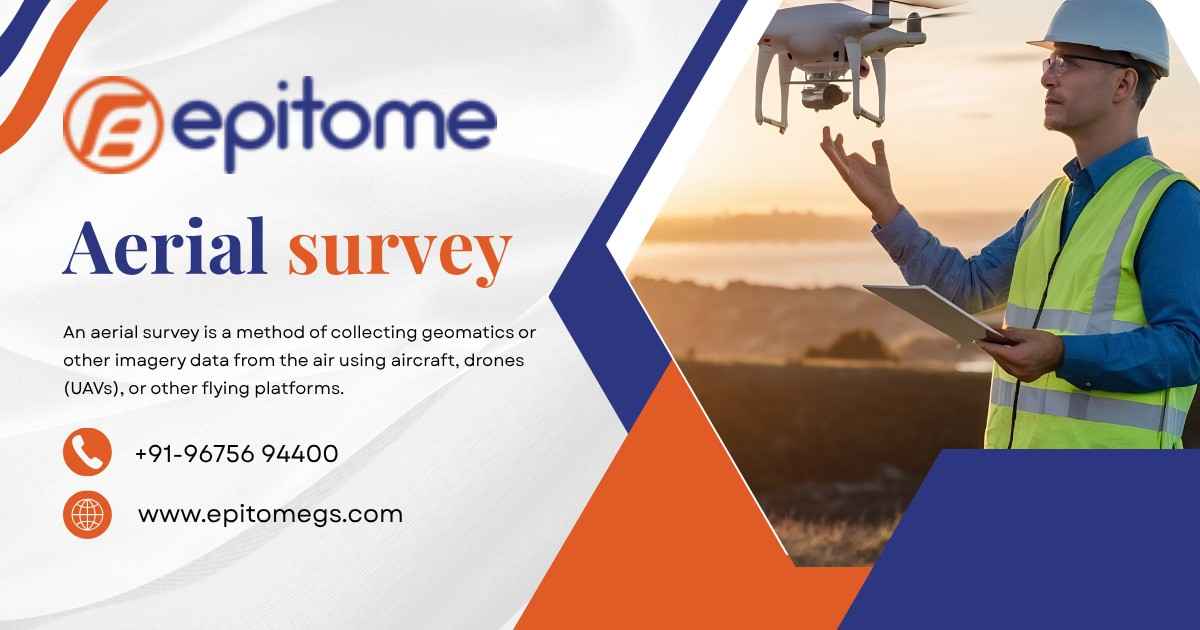


Discover the epitome of aerial surveying with this comprehensive overview for beginners. Learn essential techniques, tools, and applications .
Aerial surveying is a method of collecting geographic data or imagery from the air using aircraft, drones, or other airborne platforms. Unlike traditional ground-based surveying, provide a broader and more comprehensive view of large areas, allowing for efficient data capture over terrain that may be inaccessible or difficult to traverse. This technology plays a crucial role in a range of industries, including construction, agriculture, environmental monitoring, and archaeology.
Aerial surveying utilizes several techniques depending on the purpose and required precision. Here are the primary methods:
1. Photogrammetry
This is the most common technique, which involves capturing overlapping photographs from the air and converting them into maps or 3D models. Software then processes these images to determine distances, elevations, and other measurements.
2. LiDAR (Light Detection and Ranging)
LiDAR uses laser pulses emitted from an aircraft or drone to measure the distance between the sensor and the ground. It generates highly accurate 3D models, even through vegetation cover, making it ideal for topographic mapping and forestry applications.
3. Thermal Imaging
Thermal sensors detect temperature variations on the surface. This technique is valuable in agriculture, energy audits, and search-and-rescue operations, as it can identify heat sources or stress areas in crops.
4. Multispectral and Hyperspectral Imaging
These methods capture data across various wavelengths of light, beyond what the human eye can see. They’re widely used in agriculture, environmental monitoring, and mineral exploration to detect changes in land cover, vegetation health, and soil properties.
Aerial surveys have become a vital tool in archaeology, offering non-intrusive ways to detect and analyze historical sites. From the sky, archaeologists can identify crop marks, soil discolorations, and subtle topographical changes that may indicate buried structures or features.
Vertical photography: Captures bird’s-eye views that help in mapping and site planning.
Oblique photography: Taken at an angle to highlight shadows and surface changes.
LiDAR scanning: Penetrates vegetation to reveal ancient paths, mounds, or settlements hidden beneath forests.
These tools allow for faster site identification, preservation planning, and historical reconstruction without disturbing the actual site.
While aerial surveying is one method, surveying as a broader field consists of three primary types:
1. Land Surveying
This is the most common form, used to measure distances, angles, and elevations on the Earth’s surface. It’s essential for property boundaries, construction planning, and infrastructure development.
2. Hydrographic Surveying
This involves measuring and mapping bodies of water, including rivers, lakes, and oceans. It is essential for navigation, dredging, and marine construction.
3. Aerial (or Remote Sensing) Surveying
As discussed above, aerial surveying is used for mapping large or inaccessible areas using airborne sensors. It is efficient, fast, and often more cost-effective than ground surveys.
Aerial mapping has countless real-world applications across industries:
Urban Planning: Creating base maps for cities, roads, and zoning layouts.
Agriculture: Monitoring crop health, irrigation planning, and precision farming.
Disaster Management: Assessing damage after floods, earthquakes, or fires for rescue planning and insurance claims.
Mining & Oil Exploration: Identifying resource-rich zones and planning extraction routes.
Forestry & Environment: Monitoring deforestation, wildlife tracking, and environmental changes.
Construction & Infrastructure: Surveying land before construction and tracking site development.
Aerial surveying is revolutionizing how we collect and analyze geographical data. From archaeological discoveries to city planning, this technology offers speed, accuracy, and a new perspective from above. With advances in drone technology, LiDAR, and photogrammetry, the future of aerial mapping is promising and indispensable to modern surveying practices.
